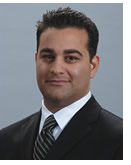September 25, 2013
Managing Partner/Operations
305-670-1101 Ext. 1023
Email: eboyer@qpwblaw.com
WEST PALM BEACH, Fla. — Quintairos, Prieto, Wood & Boyer, P.A. (QPWB) attorney Robin N. Khanal (Orlando) obtained a defense verdict in a nursing home arbitration involving a Stage IV decubitus ulcer, sepsis, weight loss, and aspiration pneumonia.
The resident was living at home, independently, with his wife in August 2008 when he fell in his driveway. He suffered a hip fracture and he was transferred to the hospital where he underwent an open reduction and internal fixation. He was in the hospital for approximately seven days before he was transferred to a skilled nursing home for rehabilitation. At the time of his transfer, a Stage II ulcer was noted to his backside.
Upon admission to the nursing home, the staff noted two unstageable wounds to the resident’s buttocks measuring 4 x 4 cm and 2 x 2 cm. The areas were described as gray in color. Wound care orders were received and an admission care plan was implemented including an intervention for turning and repositioning “as needed.”
Five days into the residency, an order was received for a wound care consultation. The staff attempted to get authorization from the primary care physician for several days without success. It took nine days for the facility to get authorization and the consultation.
One week into the residency, the wounds combined at the sacrum measuring 6 x 6.6 cm. Shortly thereafter, the final care plan was drafted including an intervention for turning and repositioning every two hours.
At the time of the wound consultation, the sacral wound measured 8 x 8 cm. The facility dietician also noted a significant weight loss of approximately 16 lbs.
The family raised concerns three days before discharge. The treating physician was called into the facility to speak to them. The facility also held a focus meeting on this day to discuss the wound, nutrition and pain.
During the early morning hours of September 15th, the resident had an elevated temperature and he was treated with Tylenol. A couple of hours later, he had a witnessed seizure lasting twenty seconds. He was transferred to the hospital without a physician’s order.
In the emergency room, the resident was diagnosed with sepsis and an infected Stage IV decubitus ulcer. A right lower lobe infiltrate and deep vein thrombosis was also noted. Infectious disease was consulted and an extensive workup was started. The resident continued on intravenous antibiotics for the course of care, which lasted eight days. On the eighth day, the resident passed away. His death certificate listed aspiration pneumonia, encephalopathy, sepsis and decubitus ulcer as the causes of death.
The resident left behind a wife of sixty years and eight adult children.
The Estate claimed the nursing facility failed to adequately address the wounds to the resident’s backside at the time of admission. The claim was based on a failure to adequately document turning and repositioning. The Estate claimed any such documentation was sparse. A nursing expert for the Estate rendered opinions in support of this allegation.
The Estate also retained a board certified internal medicine and infectious disease expert to opine as to the cause of death. This expert claimed the resident was compromised nutritionally and physically due to the sacral wound. He claimed this compromise led to the seizure and aspiration, which eventually caused the resident’s death.
The Defense team was comprised of a nurse and internal medicine expert. The overall defense theme was the wound started as a deep tissue injury and evolved into an unstageable wound until it realized itself shortly before the resident’s seizure. The nurse expert was qualified as a wound care specialist and her opinions supported the overall defense theme. She included a positive caloric intake analysis, which was the only one in the case. The internal medicine expert convinced the panel that the cause of death was solely related to the seizure and there was nothing to support the Estate’s claim of an infection through the wound site.
The Estate asked for over a million dollars in damages at the closing. The panel deliberated for over three hours before rendering a defense verdict.
